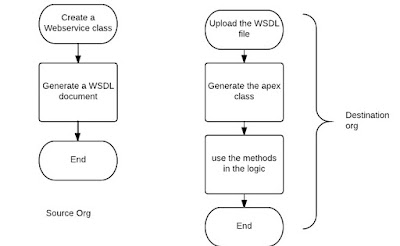Hello Amigos,
I have been thinking about doing this for a very long time now I got the chance to do it. I am gonna tell you a super simplified way to integrate two systems. I dont want to stretch the article long so I will cut of the stories as much as possible and help you understand using simple illustrations.
We came across two protocols REST and SOAP
REST Vs SOAP Though both are equally powerful which one to choose ?!?
To illustrate in the layment terms
REST
If you want to expose data without much importance to data security and you have large chunk of data to process choose REST.
REST is browser friendly since JSON is supported and its easy to understand.
REST has better performance and scalability.
SOAP
Focusses on Application logic than of Data.
It provides response in XML which I really dont like.
It is more secure than REST.
SOAP sucks :D
Image illustrates how REST works
Image illustrates how SOAP works
As a developer working on a destination org to integrate a legacy system using SOAP you need to ask for a WSDL file from the technical team of Org 1.
Part 2 and Part 3 will provide few use cases of using a API to perform HTTP callouts and writting test classes for mock callouts stay tuned.
References: SOAP vs REST
Authored by:
Nirmal Christopher,
Salesforce.com Certified Developer,
Salesforce.com Certified Developer,


